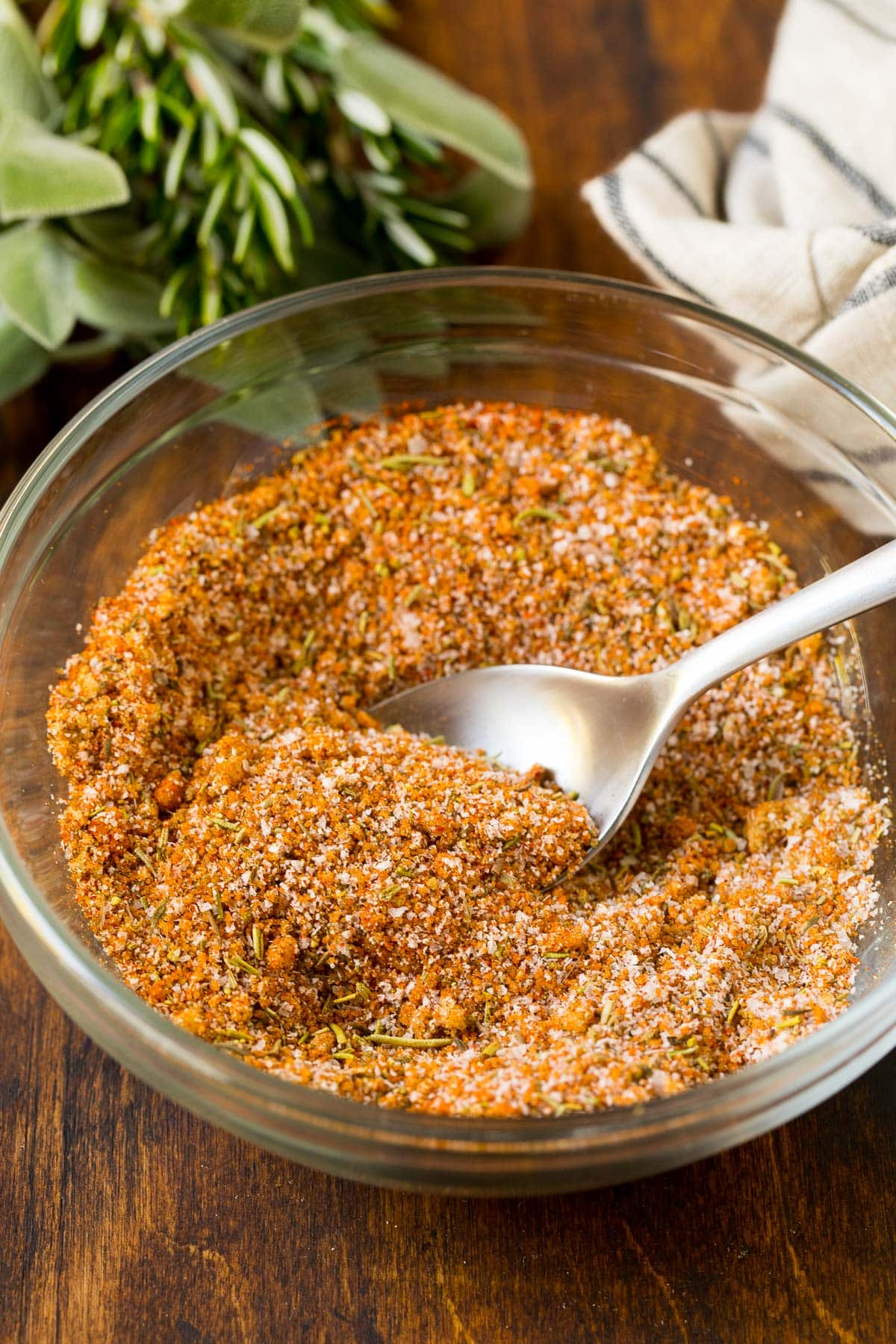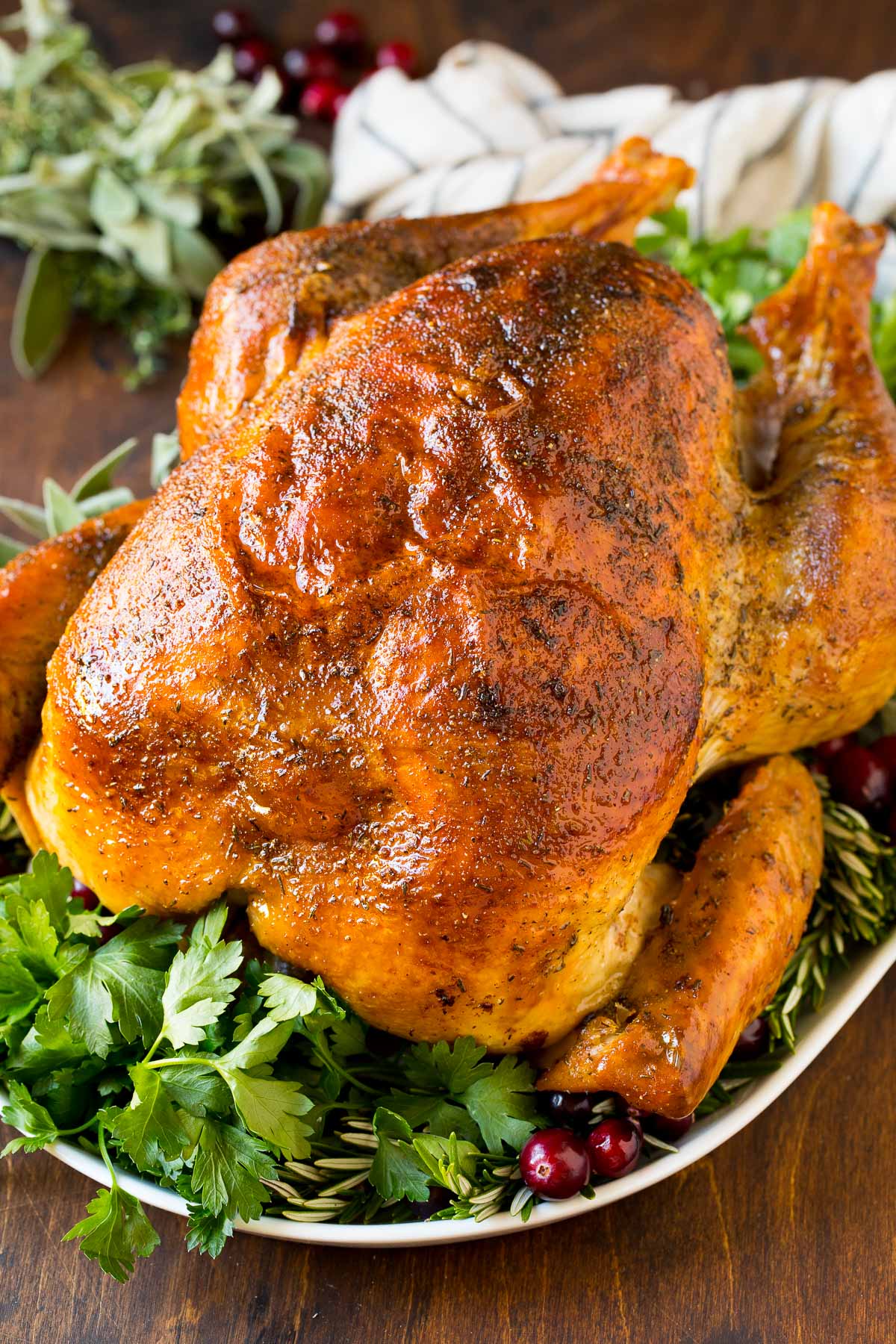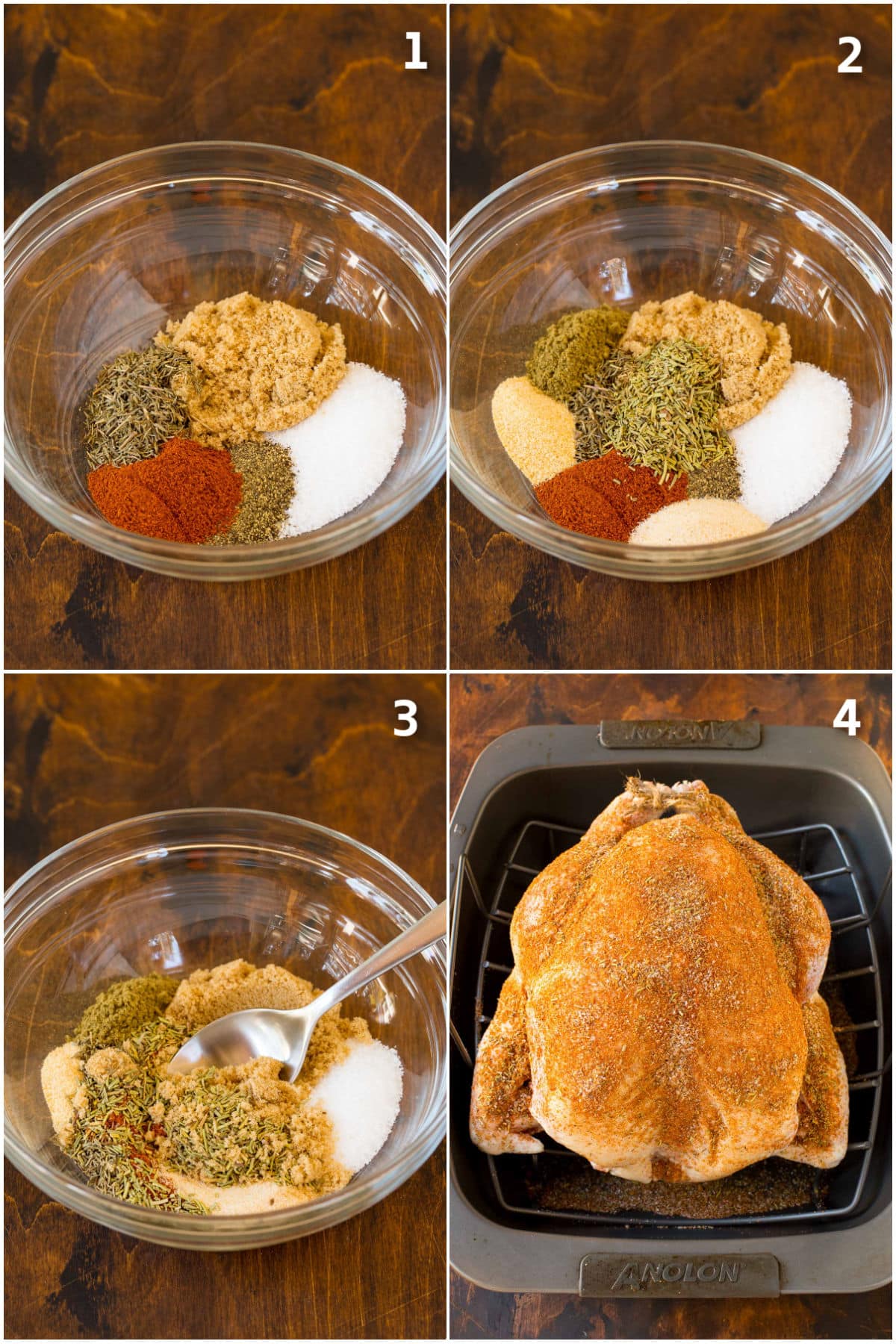This turkey rub is a blend of savory spices that come together to make the ultimate poultry seasoning. Your Thanksgiving turkey will taste much better with a homemade spice rub added, and it also pairs well with chicken, pork, and beef.
My homemade turkey rub is my go-to seasoning when I want to make a turkey that will wow everyone. For a special dinner, I pair my turkey with traditional sides like cranberry relish and sweet potato casserole.
There are tons of ways to cook a turkey, like brining, roasting, deep-frying, and more! This turkey rub elevates a simple roasted turkey to a magnificent dish. Best of all, it takes just 5 minutes to make!.
Many herbs and spices, such as salt, brown sugar, paprika, pepper, thyme, rosemary, sage, garlic powder, and onion powder, are used in this recipe.
Ah, Thanksgiving. A time for family, friends, and of course, the star of the show: the turkey. But how do you ensure your turkey emerges from the oven juicy, flavorful, and worthy of all those Thanksgiving compliments? The answer, my friend, lies in the magic of a good rub.
Now, before we dive into the world of turkey rubs, let’s address the elephant in the room: what exactly is a rub? In simple terms a rub is a blend of spices and herbs that you apply to the surface of your turkey before roasting. It’s like a flavor-infused hug that transforms your bird from bland to grand.
But with countless rub recipes out there, choosing the right one can feel like navigating a culinary maze. Fear not, fellow turkey enthusiasts, for I’m here to guide you through the process.
First, let’s consider the flavors you’re after. Do you crave a classic, savory rub with a hint of warmth? Or perhaps you’re yearning for a touch of sweetness and spice? Once you’ve identified your flavor profile, it’s time to explore the world of ingredients.
Here are some key players in the turkey rub game:
- Herbs: Rosemary, thyme, sage, and parsley are classic choices, offering a fragrant and earthy base.
- Spices: Paprika, garlic powder, onion powder, and black pepper add depth and complexity to the flavor profile.
- Citrus: A squeeze of lemon or orange zest can brighten up the rub and complement the turkey’s natural sweetness.
- Fats: Butter or olive oil help the rub adhere to the turkey and create a crispy, golden-brown skin.
Now, let’s get down to business and explore some specific rub recipes:
Classic Thanksgiving Rub:
This simple yet flavorful rub is perfect for those who prefer a traditional Thanksgiving taste,
Ingredients:
- 1 tablespoon dried rosemary
- 1 tablespoon dried thyme
- 1 tablespoon dried sage
- 1 tablespoon dried parsley
- 1 teaspoon paprika
- 1 teaspoon garlic powder
- 1 teaspoon onion powder
- 1/2 teaspoon black pepper
- 1/4 cup softened butter
Instructions:
- Combine all the dry ingredients in a small bowl.
- Rub the softened butter into the dry ingredients until well combined.
- Apply the rub evenly to the entire surface of the turkey, ensuring it gets under the skin as well.
Sweet and Spicy Rub:
This rub adds a touch of sweetness and heat to your turkey, making it perfect for those who like a bit of a kick.
Ingredients:
- 1 tablespoon brown sugar
- 1 tablespoon chili powder
- 1 tablespoon smoked paprika
- 1 tablespoon garlic powder
- 1 tablespoon onion powder
- 1 teaspoon cayenne pepper
- 1/2 teaspoon ground ginger
- 1/4 cup olive oil
Instructions:
- Combine all the dry ingredients in a small bowl.
- Whisk in the olive oil until well combined.
- Apply the rub evenly to the entire surface of the turkey, ensuring it gets under the skin as well.
Citrus Herb Rub:
This rub is a refreshing twist on the classic, with a bright citrus flavor that complements the turkey’s natural sweetness.
Ingredients:
- 1 tablespoon dried rosemary
- 1 tablespoon dried thyme
- 1 tablespoon dried sage
- 1 tablespoon dried parsley
- 1 teaspoon lemon zest
- 1 teaspoon orange zest
- 1 teaspoon garlic powder
- 1/2 teaspoon black pepper
- 1/4 cup softened butter
Instructions:
- Combine all the dry ingredients in a small bowl.
- Rub the softened butter into the dry ingredients until well combined.
- Apply the rub evenly to the entire surface of the turkey, ensuring it gets under the skin as well.
Pro Tip:
-
No matter which rub you choose, make sure to apply it generously to the entire surface of the turkey, including under the skin. This ensures even flavor distribution and helps keep the meat moist during roasting.
-
If you’re short on time, you can prepare the rub ahead of time and store it in an airtight container in the refrigerator for up to a week.
-
Don’t be afraid to experiment with different flavors and ingredients to create your own signature turkey rub. After all, the best rub is the one that you and your family love the most.
So there you have it, folks! With these tips and recipes, you’re well on your way to creating a Thanksgiving turkey that’s not just delicious, but also a testament to your culinary prowess. Now go forth and rub those turkeys with confidence!
Tips for the perfect seasoning mix
- Use this recipe to make the ideal amount of rub for a turkey weighing 10 to 12 pounds. Should your turkey be larger, you should multiply the recipe by two.
- If you would rather, you can use fresh herbs in place of the dried ones; just make sure to use three times as much fresh herb material.
- Kosher salt is used in this recipe; it is not the same as table salt. Use kosher salt for optimal results; it should be available in every supermarket.

Dredge the turkey in a generous amount of seasoning, then rub it into the skin and meat with your hands. In order to enhance the flavor, I also suggest loosening the skin on the turkey thighs and breast and applying some of the rub underneath the skin.
You can absolutely season a turkey the night before, in fact, I recommend doing this whenever possible. If the rub is left on the turkey overnight, the spices and salt will seep into the meat, resulting in a cooked bird that is more juicy and tender. After applying the rub, cover your turkey loosely with plastic wrap and refrigerate it for up to 24 hours before cooking.
Many savory and sweet flavors, including brown sugar, maple, chives, thyme, rosemary, parsley, sage, basil, paprika, pepper, garlic, onion, lemon, and oregano, go well with turkey. This is a mostly savory spice blend with a touch of brown sugar to balance the herbs, spices, and salt. Brown sugar also has the added benefit of helping to give the turkey a golden brown crust.

Although I really enjoy this spice blend just the way it is written, you can definitely alter the recipe to suit your preferences by using different flavorings.
- Sugar: In place of the brown sugar, you can use maple, muscovado, or coconut sugar. To create a wet rub, you can also combine the spices with honey, agave syrup, or maple syrup.
- Herbs: Feel free to add additional herbs, like dried parsley, basil, marjoram, savory, or oregano, to the mixture.
- Spices: You can also add cayenne pepper, mustard powder, smoked paprika, or chili powder to this rub.
- Wet Rub: To make a wet rub, combine your spice blend with two tablespoons of melted butter or olive oil.
- Smokey Rub: If you’re going to smoke your turkey, apply my smoked turkey rub.
I like to make a double or triple batch of this rub to use on roast beef, pork tenderloin, and chicken throughout the year. This spice blend will make your holiday turkey extra special this year, and you’ll be sure to receive great feedback.
How do you make turkey rub?
Place the salt, sugar, herbs and spices in a bowl, then stir until everything is well mixed. Use the seasoning right away, or store it in an airtight container for future use.

